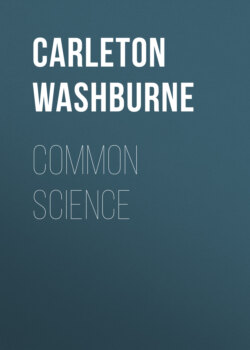Читать книгу Common Science - Carleton Washburne - Страница 18
На сайте Литреса книга снята с продажи.
Inference Exercise
ОглавлениеExplain the following:
11. When you wash dishes, a cup often floats on top of the water, while a plate made of the same sort of china sinks to the bottom of the pan.
12. If you put the cup in sidewise, it sinks.
13. The water in the cup, when lying on its side, is exactly as high as the water in the dish pan.
14. If you put a glass into the water, mouth first, the water cannot get up into the glass; if you tip it a little, there are bubbles in the water and some water enters the glass.
15. If you let a dish slip while you are wiping it, it crashes to the floor.
16. It is much harder to hold a large platter while you are wiping it than it is to hold a small butter plate.
17. If you set a hot glass upside down on the oilcloth table cover, the oilcloth bulges up into it when the hot air and steam shrink and leave a partial vacuum within the glass.
18. If you spill any of the dishwater on the floor, it flattens out.
19. You may use a kind of soap that is full of invisible little air bubbles; if you do, the soap will float on top of the water.
20. When you drop a dry dishcloth into water, it floats until all the pores are filled with water; then it sinks.
Section 5. How things are kept from toppling over: Stability.
Why is it harder to keep your balance on stilts than on your feet?
Why does a rowboat tip over more easily if you stand up in it?
